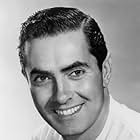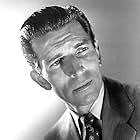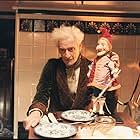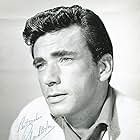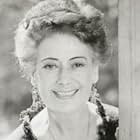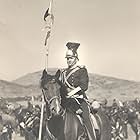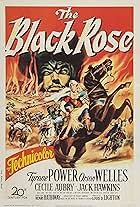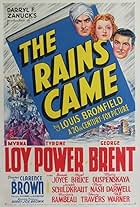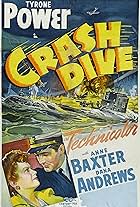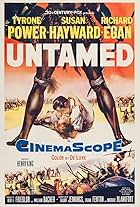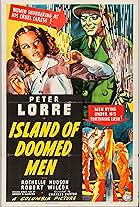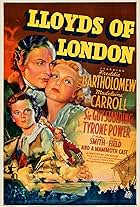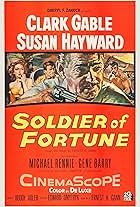A half-caste British officer in 19th-century India battles the prejudices of both his Army colleagues and the local populace while trying to help put down a rebellion led by a greedy local r... Read allA half-caste British officer in 19th-century India battles the prejudices of both his Army colleagues and the local populace while trying to help put down a rebellion led by a greedy local ruler.A half-caste British officer in 19th-century India battles the prejudices of both his Army colleagues and the local populace while trying to help put down a rebellion led by a greedy local ruler.
- Awards
- 1 nomination
Frank DeKova
- Ali Nur
- (as Frank de Kova)
Sujata Rubener
- Native Dancer
- (as Sujata)
Mohinder Bedi
- Servant
- (uncredited)
Dorothy Bonnefin
- Bit Role
- (uncredited)
Jimmie Booth
- Afridi Horseman
- (uncredited)
Rudy Bowman
- Soldier
- (uncredited)
Harry Carter
- Afridi Horseman
- (uncredited)
Maurice Colbourne
- Hamid Bahri
- (uncredited)
David Cota
- Singer
- (uncredited)
Storyline
Did you know
- TriviaTyrone Power was widely considered too old for his character, as well as unconvincing as an officer in the British army.
- GoofsCaptain King's pocket watch contains photographic images of his parents (~12:00) which must predate their stated 1833 date of death. The earliest known photograph of a person by Daguerre is from 1838 and were all exposed onto metallic silver plates.
- Quotes
Brig. Gen. J. R. Maitland: You can't marry him Susan
Susan Maitland: Say what you're thinking Father!
Brig. Gen. J. R. Maitland: He's a half caste...
- ConnectionsEdited into The Time Tunnel: Night of the Long Knives (1966)
Featured review
While offering many racist undercurrents in portraying imperialism and eastern characters, adventure movies have long satisfied a desire for escape, becoming one of the principal avenues for presenting views of foreign cultures (however warped) and distant lands to curious and receptive audiences. The genre is sufficiently flexible to allow for only a lukewarm endorsement of colonialism or questioning of its political effects, a tradition going back at least to 1928 and the notable production of WHITE SHADOWS OVER THE SOUTH SEAS. However, this theme only became established after World War II, as films began to reflect the crumbling of western empires in Africa and Asia and recognition grew of the pernicious effects of imperialism and its attendant racism. The first major film signpost of these changes was KING OF THE KHYBER RIFLES (1953), set in the Sepoy Mutiny of 1857, a conflict that had rarely been treated in films up to that time. The story centers on a character of Eurasian ancestry, Captain Alan King (Tyrone Power), who falls in love with an English girl, Susan (Terry Moore), the daughter of the outpost's commander, General Maitland (Michael Rennie)--providing an opportunity for exploring racial attitudes in a colonial setting. Focusing on a relationship between a half-caste and a white girl was, in the early 1950s, an original cinematic theme, and KING OF THE KHYBER RIFLES was unique for presenting it in adventure.
KING OF THE KHYBER RIFLES explores King's personal difficulties as he tries to find his own social position, living in uneasy suspension between the world of the native and the foreign sahibs, torn between them; only the adventurous experience can resolve his status. Prejudice against King emerges because of his parentage; fellow officers refuse to be billeted in the same quarters, and he is conspicuously not invited to the queen's birthday ball. The stress is not simply on his courage but more on the numerous challenges he must face in daily living. A social outcast at the fort, King is most secure in the home of his adopted father, Hamid Bahra, a Moslem holy man; the picture was originally to end with King returning to Bahra before joining Susan. KING OF THE KHYBER RIFLES has a lone hero and none of the emphasis on military camaraderie, or the careless, Boys' Own tone to be found in such films as GUNGA DIN. Authentic details of Indian atmosphere convey a sense of accuracy, such as the rumors that the cartridges for the new Enfield rifles are greased with pig's fat, simultaneously offending Moslem and Hindu alike. King must use his unique appeal as a fellow native to lead the Khyber Rifles in an attack on Khan's encampment. At the last moment, King's men resolve not to use the rifles but offer to follow him using their knives. The imperial conflict is between men who are sons of India, whether Kurram Khan and his followers or King and the Khyber Rifles. Yet KING OF THE KHYBER RIFLES ultimately evades the question of the desire for Indian independence, through depicting Kurram Khan's leadership as far more ruthless and dictatorial than British rule. King is in a unique position; his half-caste status, negotiating between British and Indian with a knowledge of both, enables a British victory, establishing not just his equality within the fort but also his eligibility to marry Susan. The British outpost offers the hero the only world where his merits can win recognition, partaking of both sides of his ancestry by following in his father's military footsteps. King's birthplace and home are India, not England, and though he may serve the British, he does so for the distinction such duty may bring through association with a respected unit like the Khyber Rifles. King secures greater respect than is accorded to white officers like Maitland. While utilizing many of the incidents and motifs of THE LIVES OF A BENGAL LANCER, THE CHARGE OF THE LIGHT BRIGADE, GUNGA DIN, and other such movies, KING OF THE KHYBER RIFLES also sums them up, providing both a commentary and a decisive new turn. KING OF THE KHYBER RIFLES brings Indians to the forefront, honoring the native traditions while still treating heroes and villains according to standardized genre patterns. While clearly an adventure of colonial India in the classical mode, KING OF THE KHYBER RIFLES represents a fundamental shift to an awareness of its own conventions, allowing the film to be watched today more easily than many other adventures of a similar vintage. KING OF THE KHYBER RIFLES was the fourth picture shot in Twentieth Century-Fox's new widescreen process, CinemaScope, and it was widely acclaimed as the the first picture whose action fully justified use of the anamorphic lens. Fox's directing "King" was assigned to it: Henry King, a sixty-seven year old veteran whose career stretched back to the teens, and was a personal favorite of Zanuck as well as a close friend of leading star Tyrone Power. Power, tired of playing action roles, disliked KING OF THE KHYBER RIFLES, and by then was more interested in unusual, challenging character roles. Unfortunately, Zanuck wanted to use Terry Moore, who was already under contract, as the leading lady, a role she sought assiduously despite being completely miscast in the part. Zanuck was enthusiastic about shooting KING OF THE KHYBER RIFLES in Lone Pine, and Henry King agreed that a location trip to India was unnecessary, and the California locale substituted so well that many reviewers believed that at least portions of the picture had been shot in India. Producer Frank Rosenberg selected Bernard Herrmann to write the score, hoping for and receiving something more exotic and less intrusive than the type of martial music Alfred Newman had written for previous Henry King-Tyrone Power adventure films at Fox. KING OF THE KHYBER RIFLES was widely touted as Fox's Christmas release, becoming a box-office hit, and it is still popular on television.
KING OF THE KHYBER RIFLES explores King's personal difficulties as he tries to find his own social position, living in uneasy suspension between the world of the native and the foreign sahibs, torn between them; only the adventurous experience can resolve his status. Prejudice against King emerges because of his parentage; fellow officers refuse to be billeted in the same quarters, and he is conspicuously not invited to the queen's birthday ball. The stress is not simply on his courage but more on the numerous challenges he must face in daily living. A social outcast at the fort, King is most secure in the home of his adopted father, Hamid Bahra, a Moslem holy man; the picture was originally to end with King returning to Bahra before joining Susan. KING OF THE KHYBER RIFLES has a lone hero and none of the emphasis on military camaraderie, or the careless, Boys' Own tone to be found in such films as GUNGA DIN. Authentic details of Indian atmosphere convey a sense of accuracy, such as the rumors that the cartridges for the new Enfield rifles are greased with pig's fat, simultaneously offending Moslem and Hindu alike. King must use his unique appeal as a fellow native to lead the Khyber Rifles in an attack on Khan's encampment. At the last moment, King's men resolve not to use the rifles but offer to follow him using their knives. The imperial conflict is between men who are sons of India, whether Kurram Khan and his followers or King and the Khyber Rifles. Yet KING OF THE KHYBER RIFLES ultimately evades the question of the desire for Indian independence, through depicting Kurram Khan's leadership as far more ruthless and dictatorial than British rule. King is in a unique position; his half-caste status, negotiating between British and Indian with a knowledge of both, enables a British victory, establishing not just his equality within the fort but also his eligibility to marry Susan. The British outpost offers the hero the only world where his merits can win recognition, partaking of both sides of his ancestry by following in his father's military footsteps. King's birthplace and home are India, not England, and though he may serve the British, he does so for the distinction such duty may bring through association with a respected unit like the Khyber Rifles. King secures greater respect than is accorded to white officers like Maitland. While utilizing many of the incidents and motifs of THE LIVES OF A BENGAL LANCER, THE CHARGE OF THE LIGHT BRIGADE, GUNGA DIN, and other such movies, KING OF THE KHYBER RIFLES also sums them up, providing both a commentary and a decisive new turn. KING OF THE KHYBER RIFLES brings Indians to the forefront, honoring the native traditions while still treating heroes and villains according to standardized genre patterns. While clearly an adventure of colonial India in the classical mode, KING OF THE KHYBER RIFLES represents a fundamental shift to an awareness of its own conventions, allowing the film to be watched today more easily than many other adventures of a similar vintage. KING OF THE KHYBER RIFLES was the fourth picture shot in Twentieth Century-Fox's new widescreen process, CinemaScope, and it was widely acclaimed as the the first picture whose action fully justified use of the anamorphic lens. Fox's directing "King" was assigned to it: Henry King, a sixty-seven year old veteran whose career stretched back to the teens, and was a personal favorite of Zanuck as well as a close friend of leading star Tyrone Power. Power, tired of playing action roles, disliked KING OF THE KHYBER RIFLES, and by then was more interested in unusual, challenging character roles. Unfortunately, Zanuck wanted to use Terry Moore, who was already under contract, as the leading lady, a role she sought assiduously despite being completely miscast in the part. Zanuck was enthusiastic about shooting KING OF THE KHYBER RIFLES in Lone Pine, and Henry King agreed that a location trip to India was unnecessary, and the California locale substituted so well that many reviewers believed that at least portions of the picture had been shot in India. Producer Frank Rosenberg selected Bernard Herrmann to write the score, hoping for and receiving something more exotic and less intrusive than the type of martial music Alfred Newman had written for previous Henry King-Tyrone Power adventure films at Fox. KING OF THE KHYBER RIFLES was widely touted as Fox's Christmas release, becoming a box-office hit, and it is still popular on television.
- briantaves
- Sep 22, 2004
- Permalink
- How long is King of the Khyber Rifles?Powered by Alexa
Details
- Release date
- Country of origin
- Languages
- Also known as
- Der Hauptmann von Peshawar
- Filming locations
- Alabama Hills, Lone Pine, California, USA(Khyber Pass)
- Production company
- See more company credits at IMDbPro
Box office
- Budget
- $2,190,000 (estimated)
- Runtime1 hour 40 minutes
- Aspect ratio
- 2.55 : 1
Contribute to this page
Suggest an edit or add missing content

Top Gap
By what name was King of the Khyber Rifles (1953) officially released in India in English?
Answer








